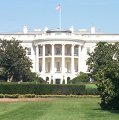Government Grants
Business Grants
Home Owner Programs
Federal Programs
About Us
Technical Assistance and Training Grants Grants
TAT Grant Program FY17 Funds may be used to pay expenses associated with providing technical assistance and/or training (TAT) to identify and evaluate solutions to water problems relating to source, storage, treatment, and...more
Posted On - 2016-10-01
TAT Grant Program FY16 Funds may be used to pay expenses associated with providing technical assistance and/or training (TAT) to identify and evaluate solutions to water problems relating to source, storage, treatment, and...more
Posted On - 2015-10-01
TAT Grant Program FY15 Funds may be used to pay expenses associated with providing technical assistance and/or training (TAT) to identify and evaluate solutions to water problems relating to source, storage, treatment, and...more
Posted On - 2014-10-01
Border Needs Assessment TAT The U.S.-Mexico Border Region is a dynamic area where public health and environmental challenges are interconnected, populations intermingle, and water resources are shared by both countries. USDA...more
Posted On - 2014-04-04
Technical Assistance and Training Grant Funds may be used to pay expenses associated with providing technical assistance and/or training (TAT) to identify and evaluate solutions to water problems relating to source, storage, treatment, and...more
Posted On - 2013-11-04
Technical Assistance Training Grant Funds may be used to pay expenses associated with providing technical assistance and/or training (TAT) to identify and evaluate solutions to water problems relating to source, storage, treatment, and...more
Posted On - 2012-11-08
Technical Assistance and Training Grant Funds may be used to pay expenses associated with providing technical assistance and/or training (TAT) to identify and evaluate solutions to water problems relating to source, storage, treatment, and...more
Posted On - 2011-10-05
Social Entrepreneurship
Spotlight
Europe-wide Call to Support Social Enterprises

Social enterprise leaders throughout Europe are urging local authorities to use their powers to help the third sector grow. During a two-day European Commission event in Strasbourg, councils in member states are called upon to use a variety of methods to support the sector.
Not for Profit Jobs in Nebraska
Executive Director Jobs
Substance Abuse Jobs
Program Director Jobs
Executive Director Jobs
Social Services Jobs







